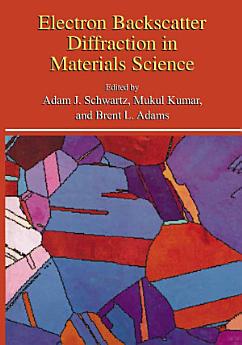Electron Backscatter Diffraction in Materials Science
Adam J. Schwartz · Mukul Kumar · Brent L. Adams · David P. Field
Juni 2013 · Springer Science & Business Media
E-Book
339
Seiten
reportBewertungen und Rezensionen werden nicht geprüft Weitere Informationen
Über dieses E-Book
Crystallographic texture or preferred orientation has long been known to strongly influence material properties. Historically, the means of obtaining such texture data has been though the use of x-ray or neutron diffraction for bulk texture measurements, or transmission electron microscopy or electron channeling for local crystallographic information. In recent years, we have seen the emergence of a new characterization technique for probing the microtexture of materials. This advance has come about primarily through the automated indexing of electron backscatter diffraction (EBSD) patterns. The first commercially available system was introduced in 1994, and since then of sales worldwide has been dramatic. This has accompanied widening the growth applicability in materials scienceproblems such as microtexture, phase identification, grain boundary character distribution, deformation microstructures, etc. and is evidence that this technique can, in some cases, replace more time-consuming transmission electron microscope (TEM) or x-ray diffraction investigations. The benefits lie in the fact that the spatial resolution on new field emission scanning electron microscopes (SEM) can approach 50 nm, but spatial extent can be as large a centimeter or greater with a computer controlled stage and montagingofthe images. Additional benefits include the relative ease and low costofattaching EBSD hardware to new or existing SEMs. Electron backscatter diffraction is also known as backscatter Kikuchi diffraction (BKD), or electron backscatter pattern technique (EBSP). Commercial names for the automation include Orientation Imaging Microscopy (OIMTM) and Automated Crystal Orientation Mapping (ACOM).
Dieses E-Book bewerten
Deine Meinung ist gefragt!
Informationen zum Lesen
Smartphones und Tablets
Nachdem du die Google Play Bücher App für Android und iPad/iPhone installiert hast, wird diese automatisch mit deinem Konto synchronisiert, sodass du auch unterwegs online und offline lesen kannst.
Laptops und Computer
Im Webbrowser auf deinem Computer kannst du dir Hörbucher anhören, die du bei Google Play gekauft hast.
E-Reader und andere Geräte
Wenn du Bücher auf E-Ink-Geräten lesen möchtest, beispielsweise auf einem Kobo eReader, lade eine Datei herunter und übertrage sie auf dein Gerät. Eine ausführliche Anleitung zum Übertragen der Dateien auf unterstützte E-Reader findest du in der Hilfe.





